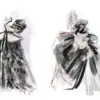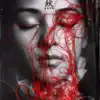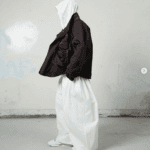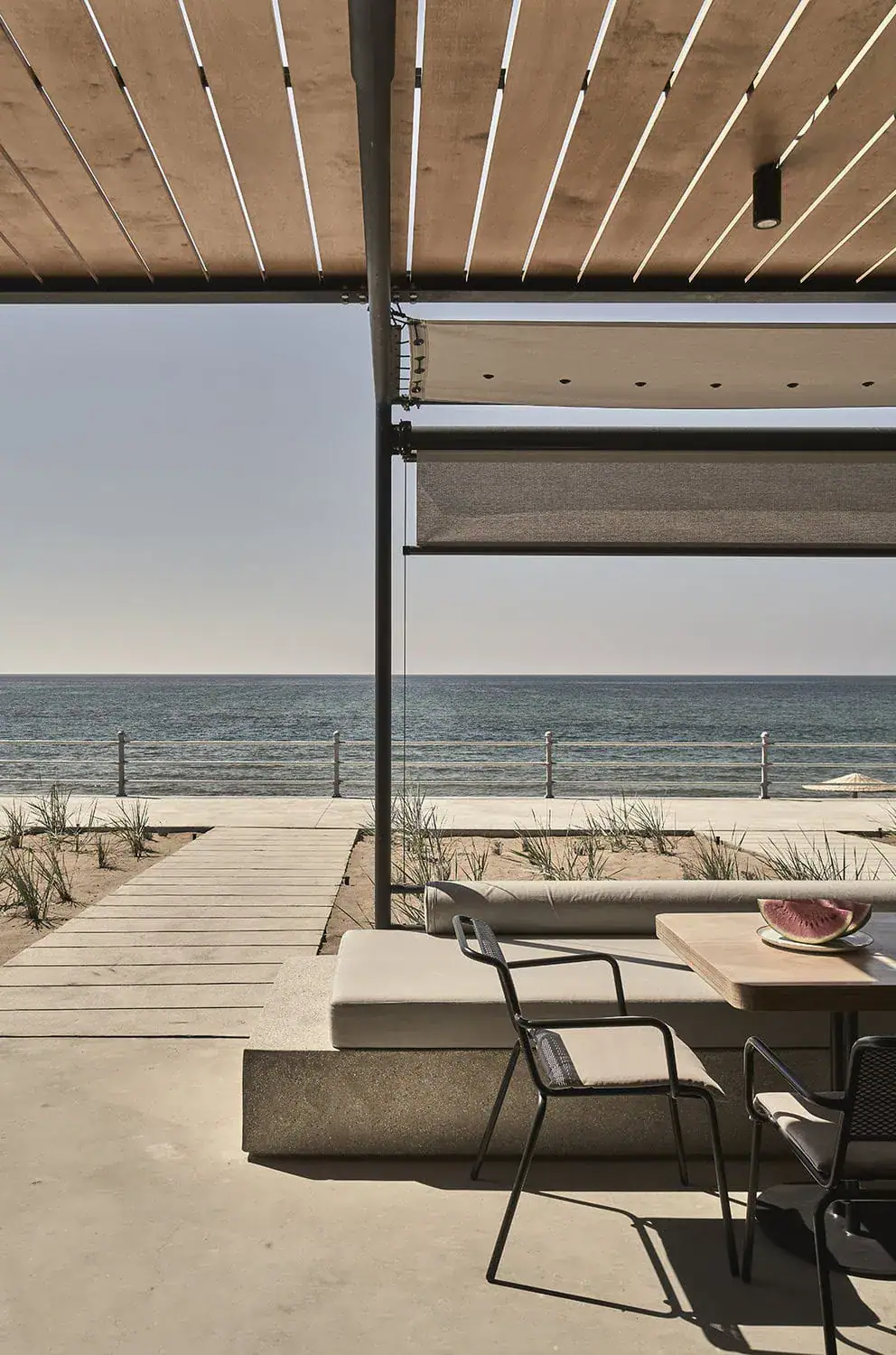The ALBERTINA Museum is showing the highlights of its large holdings of works by Jim Dine – a representative selection of the artist’s generous donation that presents his oeuvre in a multifaceted way.

Jim Dine is often categorised as one of the pioneers of Pop-Art a misunderstanding. But anyone who, like Dine arranged everyday objects into assemblages, no matter how much they were interwoven with his own biography, were almost inevitably categorised as Pop Art in the early 1960s. was almost inevitably categorised as Pop Art. Jim Dine’s early preference for ‘popular motifs’ such as the heart, garishly colourful and loud, or the subject of the trivial bathrobe, inevitably drew him into the maelstrom of this American awakening of the 1960s.
American awakening of the 1960s. Added to this was the artist’s admiration for the fathers of Pop Art, Jasper Johns, Robert Rauschenberg and Claes Oldenburg: the label of Pop Art was thus to stick to Jim Dine’s work for a long time, thus blocking access to its deeply subjective dimension.

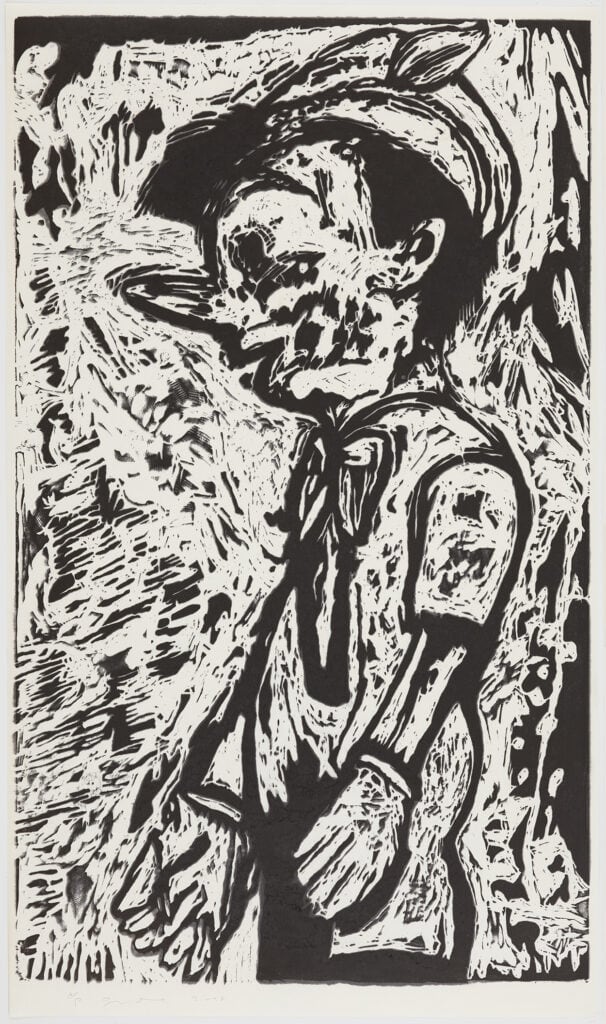
Jim Dine describes himself as a painter who draws and is rightly convinced that he cannot be categorised in any art movements or isms. His free and unconventional approach to the possibilities The free and unconventional use of the possibilities of painting, drawing and printmaking and his openness to experimentation, whether it leads to abstraction or remains connected to the representational, are an expression of his his value-free encounter with the pictorial object.
The self-portrait as a revelation of the self The large number of self-portraits is a special feature of Dine’s work. Even the clarification that the artist understands the bathrobe as a self-thematisation, as a self-portrait, has not prevented this group of works from being seen as merely the reproduction of the most external thing that can clothe a person.
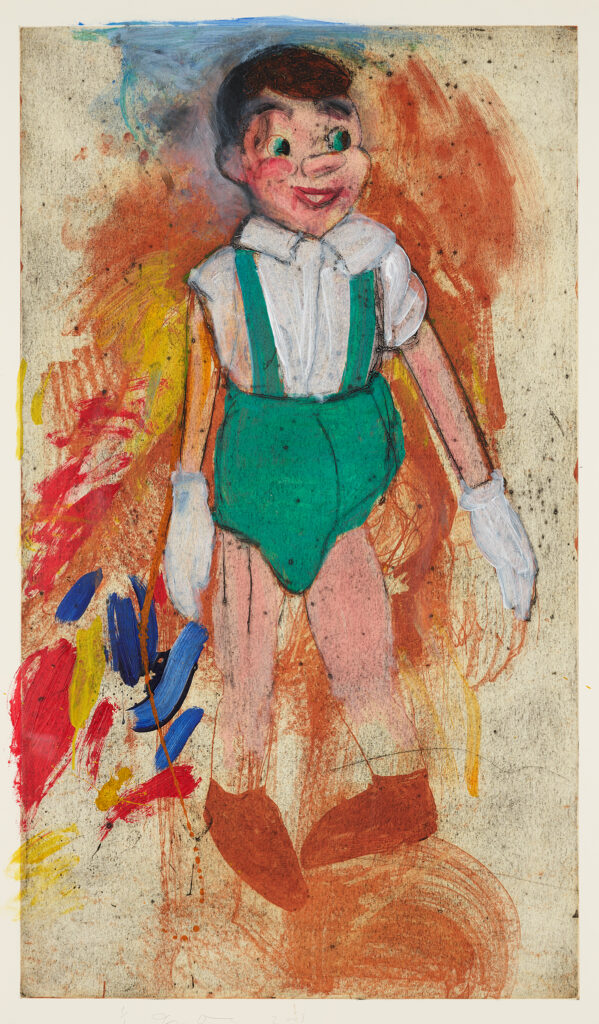
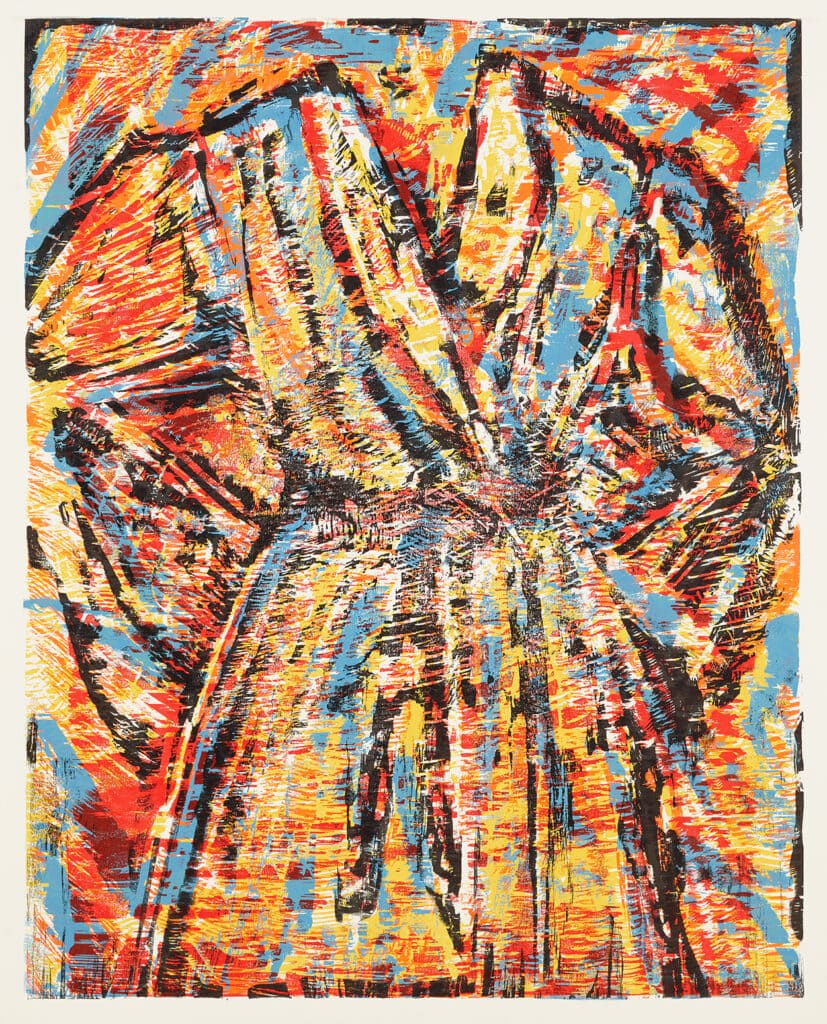
The group of self-portraits allows for an independent, intensive and surprising dialogue with the artist and his work. While Rembrandt, for example, portrays himself in his self-portraits as a drunken beggar, a nobleman, a prodigal son, a successful or failed painter, a doubting painter.
Albrecht Dürer also recognises the wide range between Christological self-interpretation or the proud fiancé.
In contrast to these forefathers of the self-portrait, Jim Dine always shows the same ‘I’, the same
face, with little emotional variation. He almost always has the same facial expression: his gaze is
serious. Jim Dine does not disguise himself. He does not play roles. His self-portraits are not contributions to various stages of a long life. They are not an autobiography, a situational self-analysis, a profound study of the psyche, thoughts and feelings in a thoughts and feelings in a datable moment of life. Jim Dine’s self-portraits are rather studies of that unchanging core of character that remains the same through all the ups and downs, storms, crises and joys of life. ‘I paint who I am, I paint what I am.’ In this quote
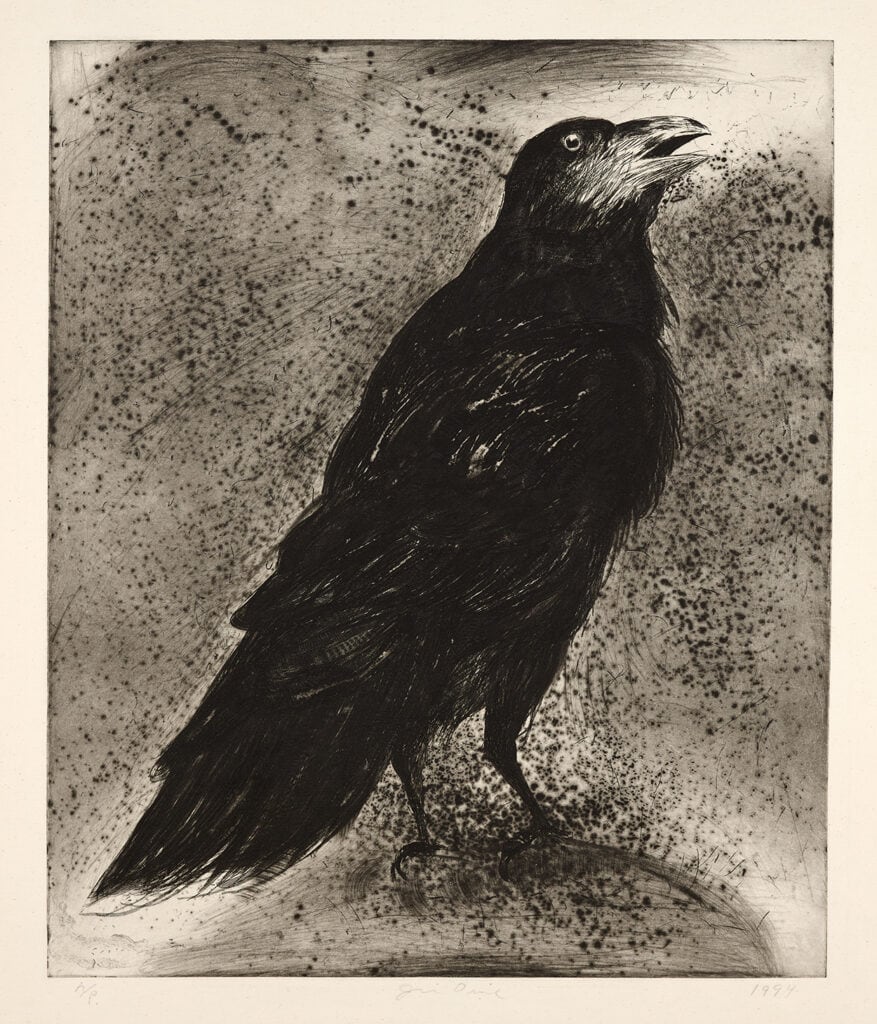
Jim Dines, the artist declares his understanding of self-representation as a medium of revealing the self as it was, is and remains. The subjective in the objectivity of everyday life. In fact, Jim Dine was always concerned with the innermost, the most subjective. For Dine, the bathrobe is an object with which he expresses his feelings. In fact, Jim Dine’s work can be described as a reflection on himself. Marco Livingstone has rightly called Dine’s work ‘a prolonged meditation on the self’. It is not only the motif of the bathrobe that is a placeholder for the artist himself, but also the tools that have been omnipresent in his oeuvre for decades – hammer, saw, pliers – are based on childhood memories of these strange things. Nevertheless, anyone who varies a bathrobe in hundreds of shapes, formats, techniques and colours, the bathrobe eventually becomes what it is: a bathrobe, an ordinary object.
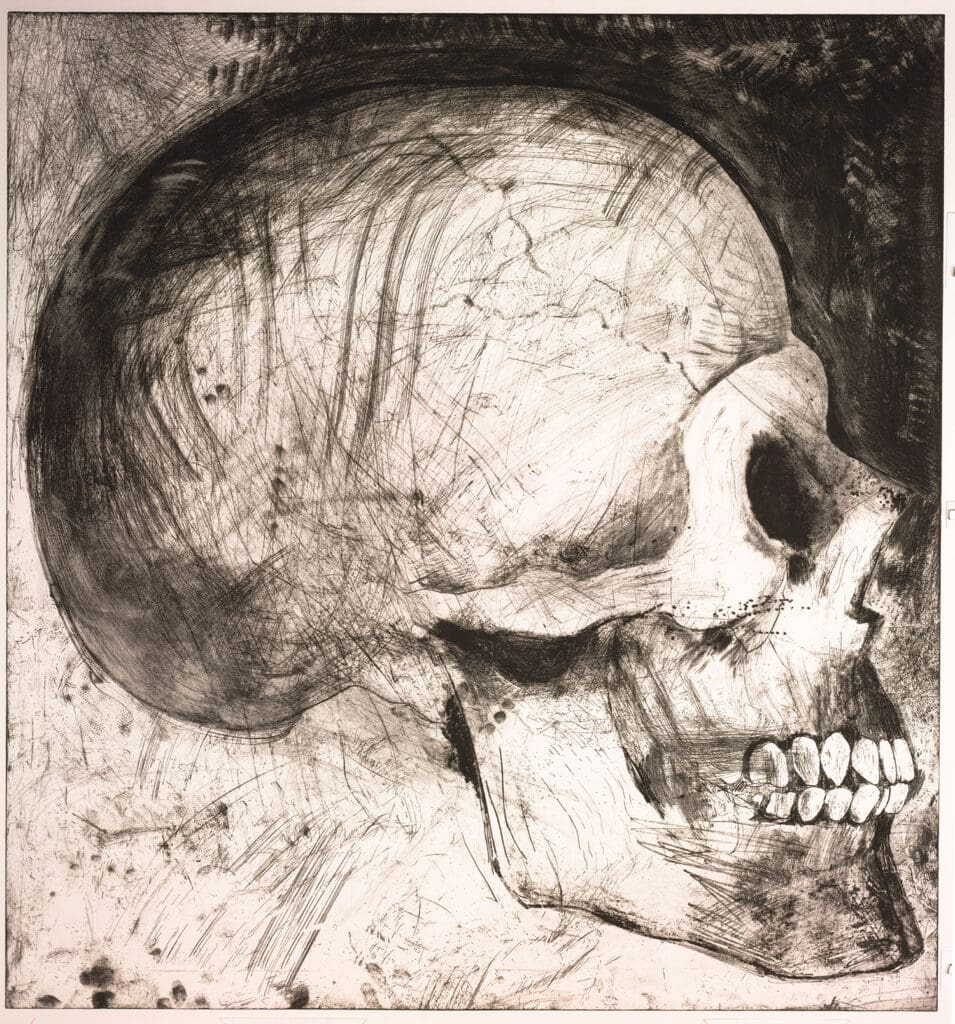
The use and further development of different printing processes testify to Dine’s fascination with printmaking techniques. The artist always emphasises the great importance of collaboration with the respective printer, not only because it represents an antithesis to solitary work in the studio, but also because creative exchange and productive realisation take place in this cooperation.
Dine experiments with a variety of techniques and materials and thematises youth and age,
intimacy and extraversion as well as seriality and creativity on paper. His figurative motifs are to be read as representatives of the artist, as objectification of his feelings, as Dine himself explains.
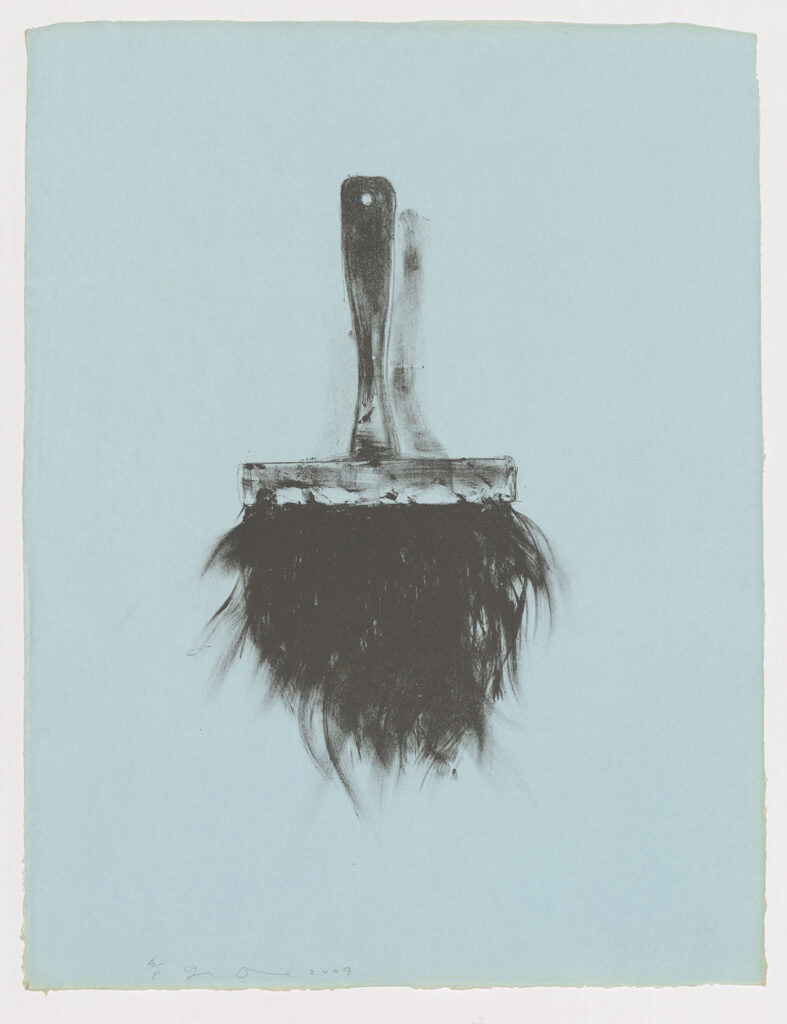
The exhibition will be on display at the ALBERTINA Museum from 8 November 2024 to 23 March 2025.

